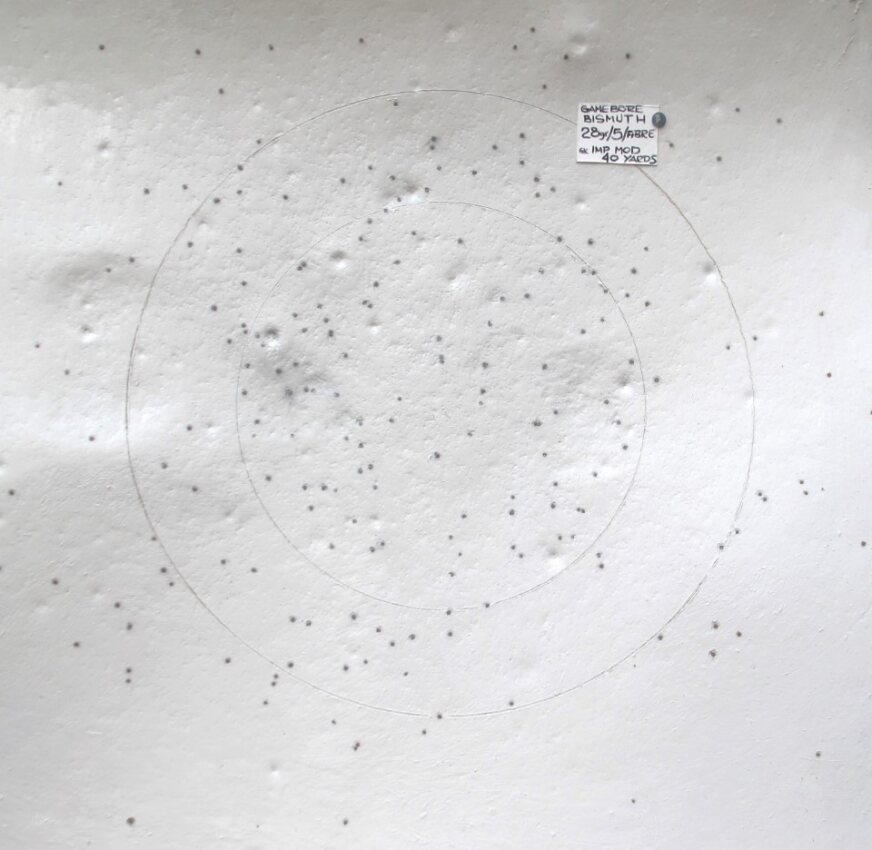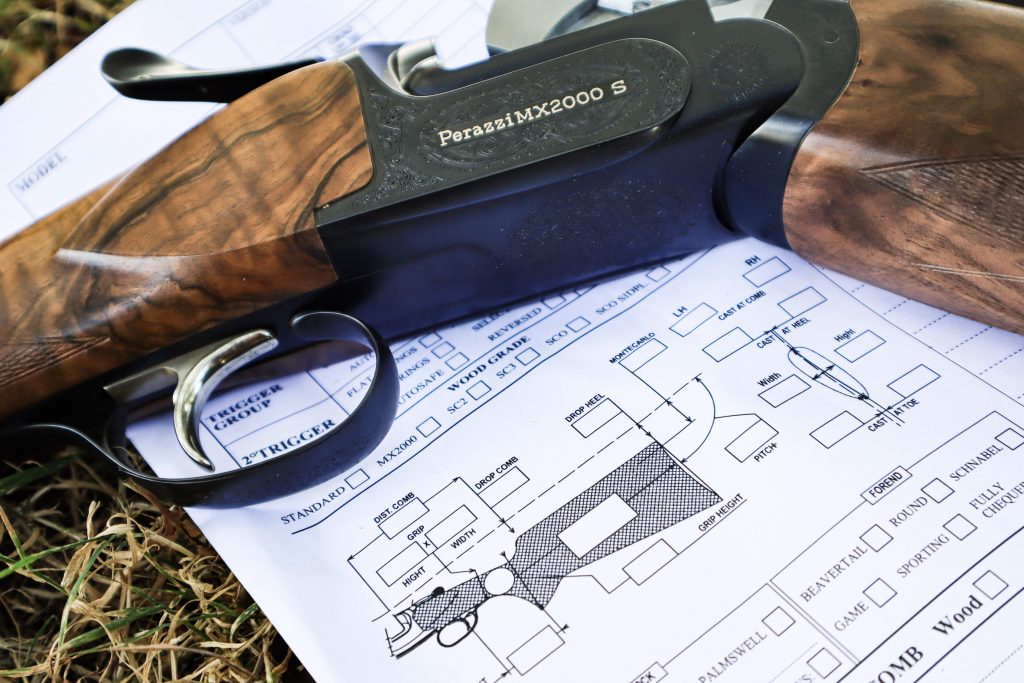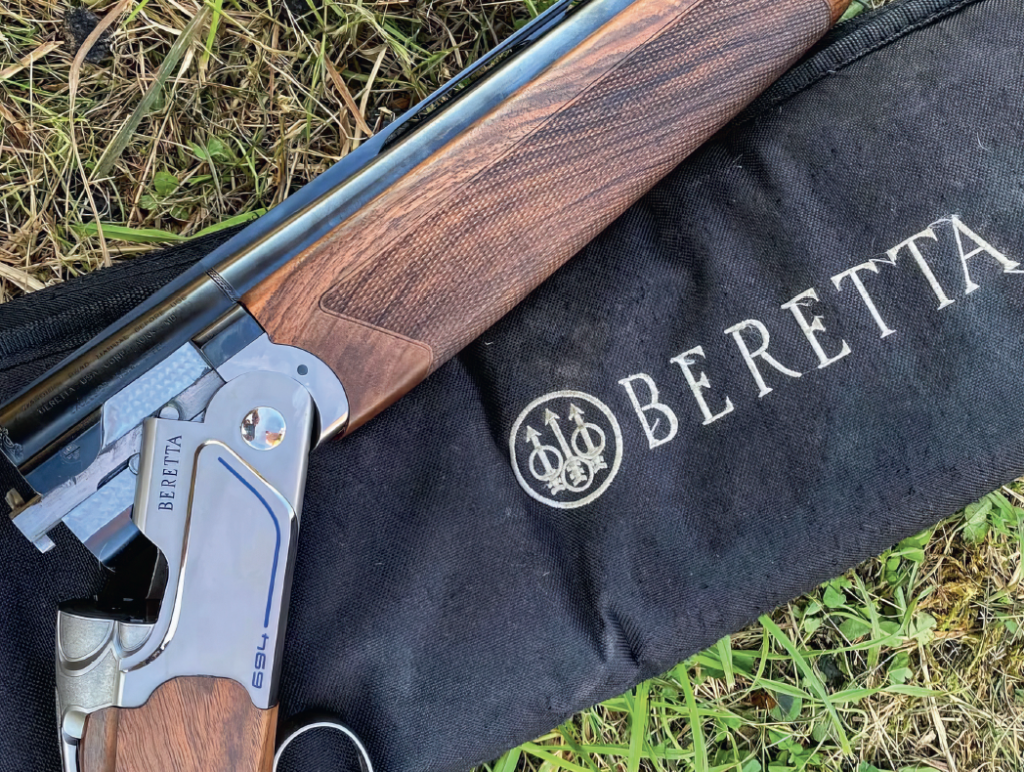Soft and Safe
Richard Atkins examines an alternative to lead shot for lightweight game guns, in the form of the Gamebore 28g No. 5 shot fibre-wad game cartridge
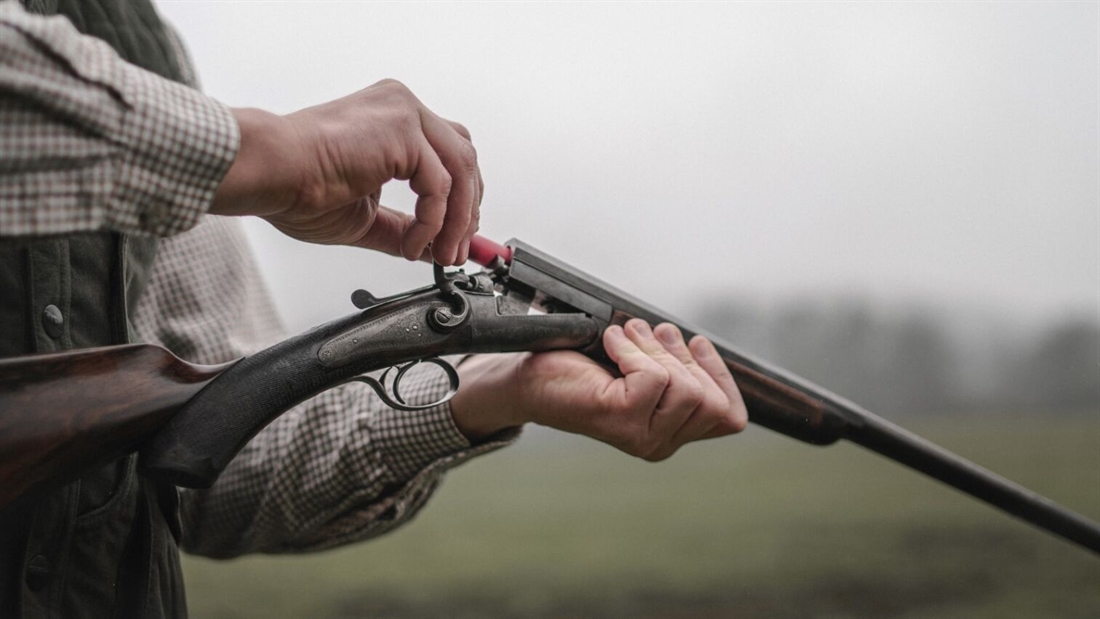
In recent years the focus on non-lead cartridges for the game shooter has been firmly on steel shot options, mostly with bio polymer full-cup wads. This is natural enough given that other shot options are much more expensive than lead shot and steel requires a fully protective shot cup. There are, however, a substantial number of game shooters who feel uncertain about using steel shot in their English-style game side-by-side shotguns, especially those with thin barrel walls and a short chamber length.
These features can provide such guns with delightfully nimble handling characteristics, which accounts for much of their charm. The downside is that the looming need to use non-lead cartridges creates a dilemma for the owners of these guns, which are often quite valuable.
Advice from the proofing authorities and the Gun Trade Association suggests that shotguns of this type should not use steel shot with greater than quarter-choke constriction, rather less than the half choke upper limit suggested for HP steel cartridges. There is just no way of reliably predicting where the combination of barrel wall thickness and choke constriction will result in damage to the gun and so, inevitably, any advice provided must err on the side of caution. It is therefore understandable why some shooters seek a safe alternative to steel shot and bismuth is an established, if costly, non-lead option.
Gamebore Bismuth
The Gamebore cartridges supplied for this review certainly have stand-out packaging. The high sheen, bright blue carton with silvery lettering will be easily spotted on the shop shelf.
Keeping to the traditional format for lightweight game guns, these Bismuth cartridges are loaded into 65mm paper cases, which are ideally suited to the 2½” chamber length associated with these guns. The cases and primers are made by Cheddite, one of the world’s leading makers. The six-star crimp closure is very well formed to produce a neat, tight finish to the cases, which have lacquer applied for moisture resistance and added strength.
The propellant used is the highly regarded Baschieri & Pellagri F2, square cut, green flake laminate nitrocellulose. It has the yellow identification flake, which is the medium burn rate grade. It is known for consistent performance under a variety of atmospheric conditions. It is a ‘clean burning’ propellant, although some slight residue was left in the barrels.
The wadding used is also traditional, being a 13mm tall Diana fibre main driving wad, used in conjunction with a 4mm thick, hard cardboard over-powder nitro card.
This card helps in providing an improved gas seal to reduce gas passing by the fibre wad at ignition and also prevents any grease used on the fibre wad from leaching into the propellant powder.
Key to this cartridge is, of course, the bismuth shot. There was some variety in shot size in the samples examined. The bulk of the pellets were around UK No. 5, as marked, with a small number ranging from No. 7 to slightly larger than No. 5. This is a slightly wider range of sizes than typically found with Gamebore’s lead shot, which is closely graded for size.
With bismuth having a lower specific gravity than lead, there is a higher pellet count than with lead for the same weight. In this case the average count per ounce was 250, whereas lead No. 5 would generally be around 220. A small percentage of tin is often added to bismuth to help reduce its tendency to fracture.
Observations
The proof laboratory report reveals that velocities averaged 384m/s, which is a typically brisk, but not overly fast, speed for a game load of this type. Some lead shot
loads will be slower, but with Bismuth being less dense than lead the velocity is required to provide adequate energy within sporting distances. Higher velocities can adversely affect patterns, especially with fibre-wad cartridges, and Gamebore have sensibly selected an effective compromise.
The velocity standard deviation is a little more than some but well within the range found with fibre-wad game loads. The pressure result shows that the B&P F2 powder produces these velocities at very modest pressures. This has the bonus of being less stressful to the lightweight game guns they are intended for.
The shot hardness crush value is affected by the brittle nature of bismuth, which tends to crack under a firm blow. The crush test device I use is the standard for testing lead shot, which is, of course, more malleable.
The figure arrived at here is an indication of the percentage these bismuth pellets crush under the fixed half pound falling weight.

These pattern results are the average of five patterns fired from my Winchester Super X-1 semi-auto, with standard (0.729″) bore size, short forcing cone and fixed Imp Mod (¾) choke at 40yd
At 26% this equates to a medium antimony, moderately hard lead pellet. It is this relative softness of bismuth that makes it suitable as a direct replacement for lead and therefore for use with fibre wads.
Note that although some pellets fractured completely when crush tested, as the pattern illustration shows there was no evidence of pellets disintegrating prior to striking the steel pattern plate.
The pattern results reveal very acceptable pattern density with reasonable distribution to provide effective pattern coverage. Note that the actual pattern percentage in the 30″ circle is slightly under the nominal Imp Mod (60%) figure for 40yd patterns. This is a small amount but is worth noting. I do not have a 2½” chambered gun to test what difference that might make. I accept that it may make a small improvement.
My test gun has a 2¾” chamber and my newer steel-proofed guns have 76mm/3″ chambers, and none of the lightweight guns these cartridges are intended for will have chambers of that length. Some may have had their chambers lengthened to 2¾” (70mm).
These patterns indicate that the 28g shot load produces a good pellet density that is more than adequate at 40yd. Bearing in mind the less dense bismuth shot, this distance should not be extended much as pellet energy will be drop off.
This range is not a problem because the lightweight English-style game guns for which these cartridges are intended are used mostly for the type of shooting that is undertaken at closer ranges, often over open land, or from the rides or outskirts of established woodland, where these guns excel. There is much more of this type of shooting than the high-bird style, where shooters stand in valleys or under escarpments and where different guns – and cartridges – are required.
As is always the case, the only way to discover how your gun will perform with any cartridge is to test it for yourself – preferably at the pattern plate to start. These cartridges are smooth to shoot, as is expected with a 65mm, 28g,12-gauge cartridge. They patterned well and the gun did not require a lot of scrubbing to clean after testing.
The main drawback with any bismuth shot cartridge is the price. There is little that can be done about that because bismuth is much less plentiful than lead and in recent years demand has increased rapidly. Currently cartridges are available for around £1300/1000 (£1.30 each), which is considerably more expensive than either steel shot or lead shot cartridges. They do, though, provide the option of an effective game cartridge that does not require the chokes to be opened in your gun and can be used with fibre wads without concern about barrel damage.
Seen as part of the overall costs involved in a day’s game shooting, including travel, tips and possibly accommodation, the additional cost may seem more manageable.
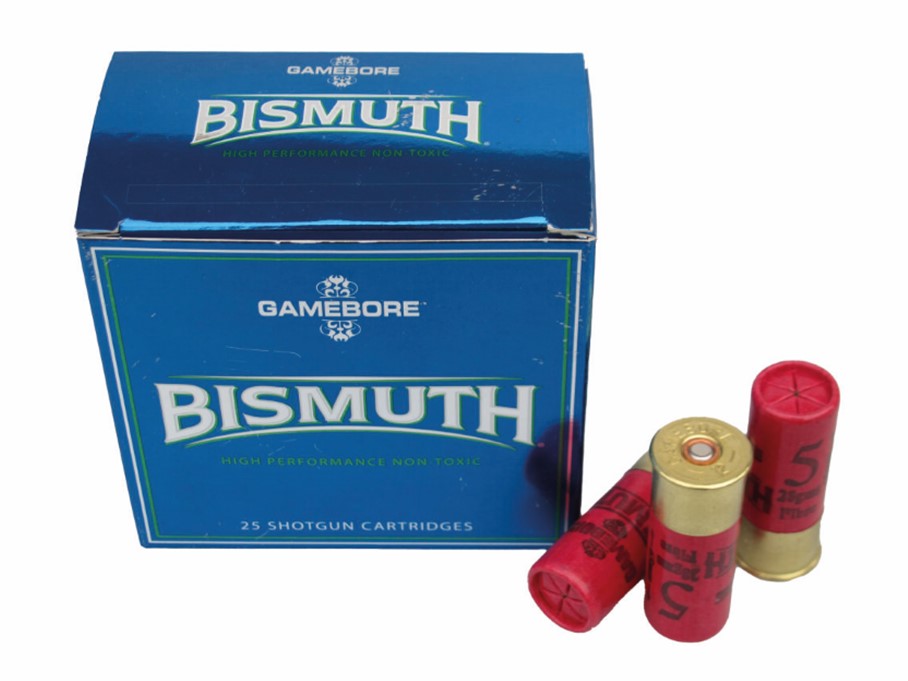
Tech Specs
Gamebore Bismuth 28g No. 5 fibre wad
Velocity: 384m/s (1260fps)
SD: 13 (352-405m/s)
Pressure: 553 bar Momentum: 10.75Ns Shot load: 432g
Average pellets/load: 247
UK shot size: 5
Shot crush value: 26%
As reported by the Birmingham Proof Laboratory. Velocity is measured at
2.5m from the muzzle. Pressure is the mean breech figure in bars (as per CIP).




